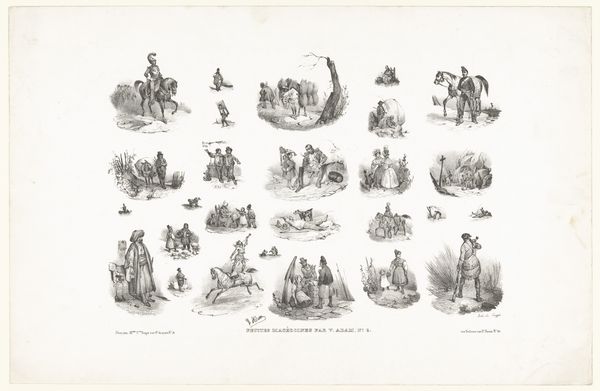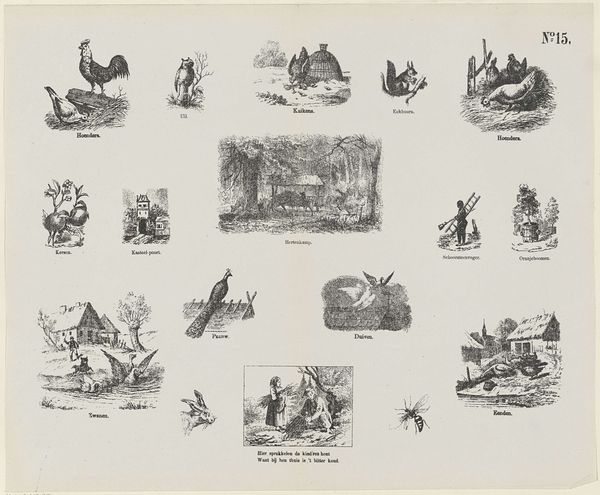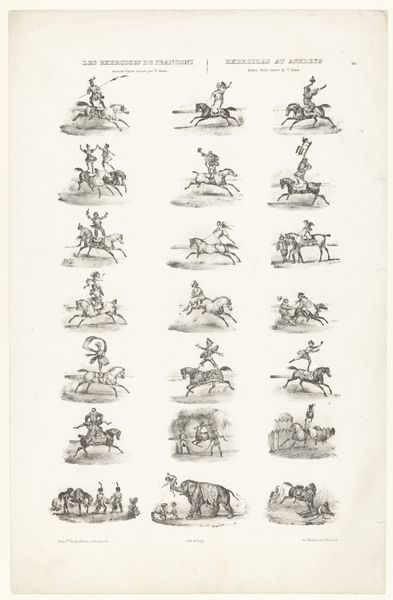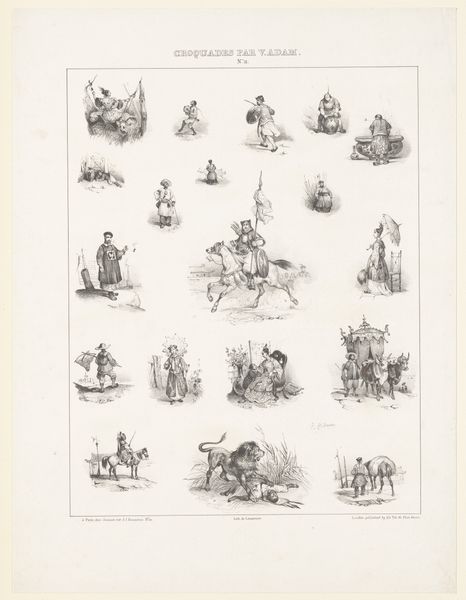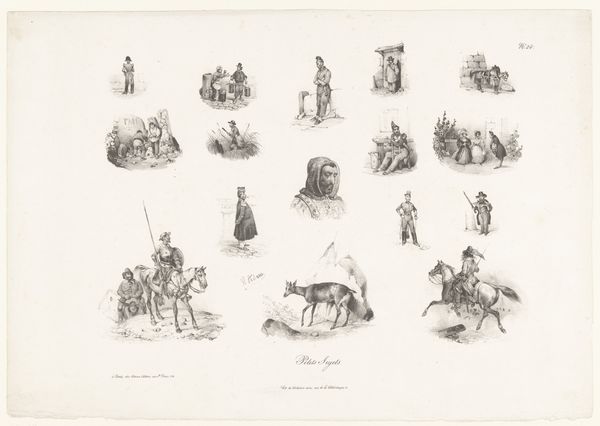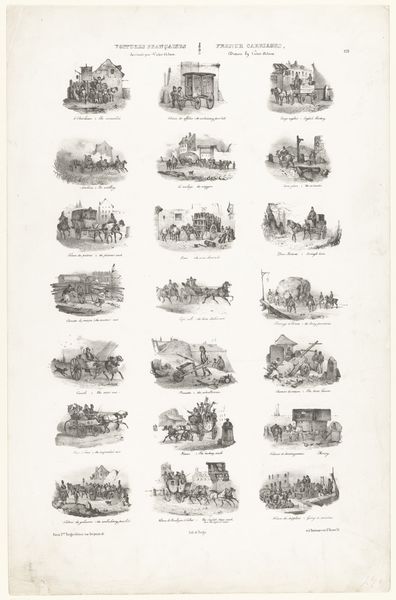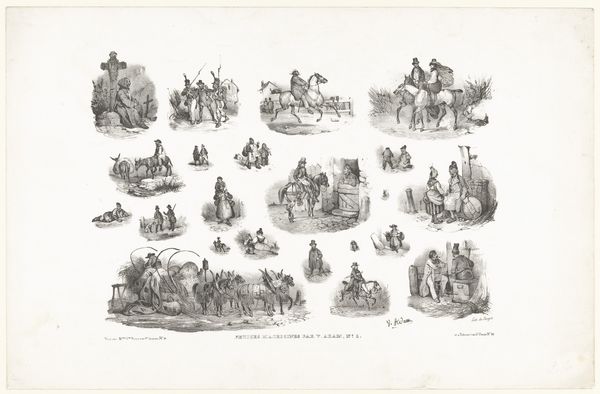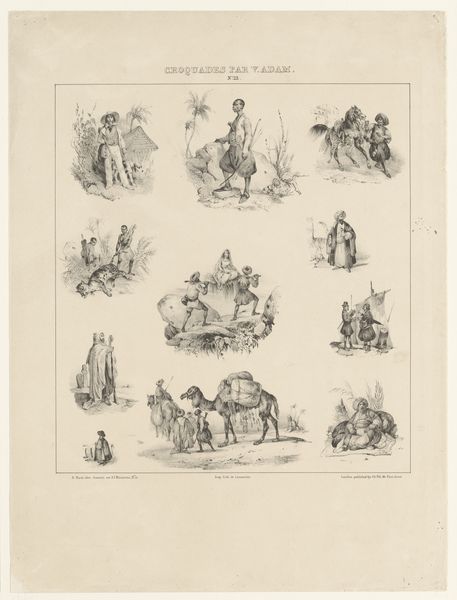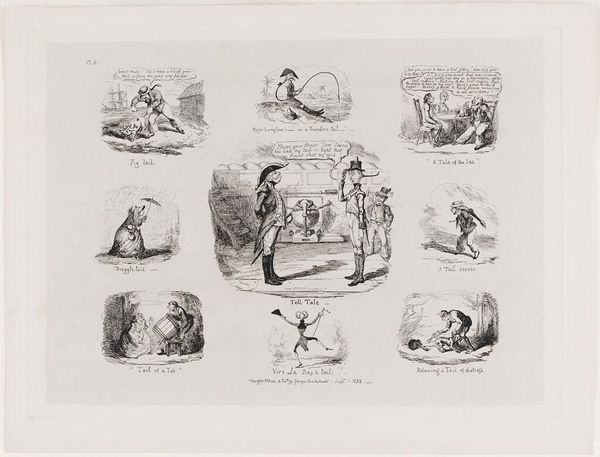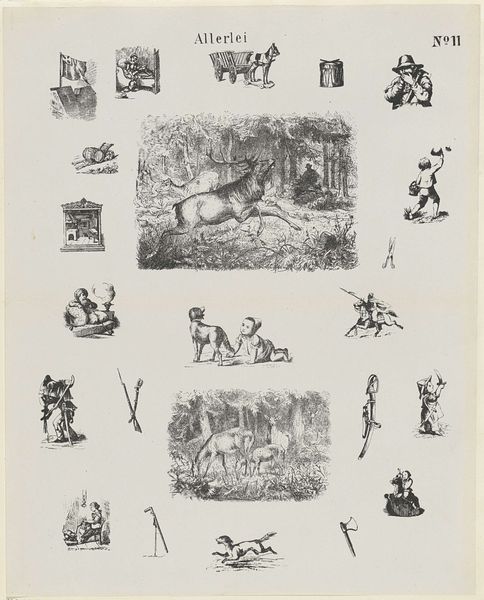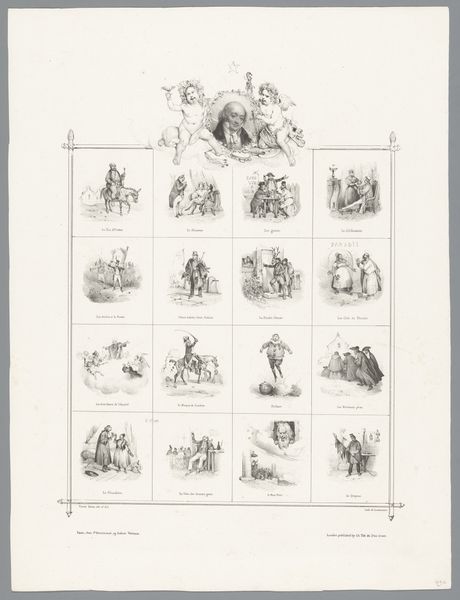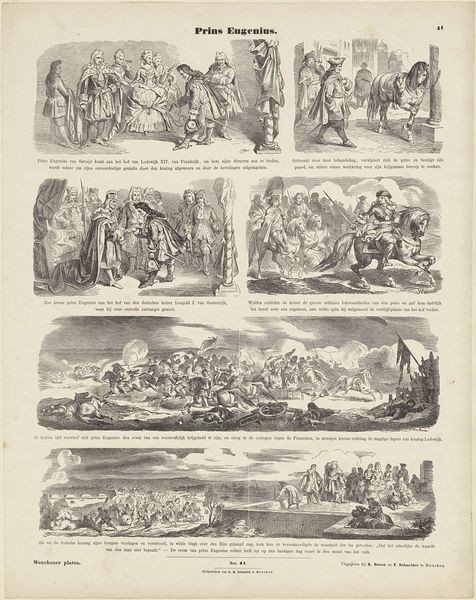
drawing, print, etching, ink
#
drawing
#
narrative-art
#
animal
# print
#
pen sketch
#
etching
#
landscape
#
ink
#
romanticism
#
genre-painting
Dimensions: height 480 mm, width 307 mm
Copyright: Rijks Museum: Open Domain
Curator: This etching from 1832 by Victor Adam, titled 'Negentien jachttaferelen,' or 'Nineteen Hunting Scenes,' presents a fascinating look at genre painting of its time. I'm interested in understanding how its production and consumption intersected with social norms. Editor: It's quite a dense piece! Seeing all those little vignettes together... it’s interesting how it visualizes multiple hunting narratives simultaneously in one composition. What's particularly striking to you? Curator: The printmaking process itself is central to understanding this work. Etchings like this weren't just aesthetic objects; they were commodities. These hunting scenes depict the leisure activities of the landed gentry, yet the creation and distribution of the print made these scenes accessible, in a way, to a wider audience. Editor: So, the printmaking technique democratizes the imagery. What does that suggest about class and access? Curator: Precisely. Think about the materials used: the paper, the ink, the etching plates. Each element speaks to a specific mode of production and distribution. Was it intended for display, or mass circulation? Who could afford such prints, and what did possessing such images signify about their own social standing and aspirations? Consider also, the labour involved - from the artist's hand, to the printing press workers, each bringing a unique material condition to the artwork. Editor: It’s making me think about how this object acts as a physical representation of social relationships through labor and class. What did people *do* with prints like these? Curator: Were they bound in books, framed on walls, or used as source material for other crafts? Its location at the Rijksmuseum today gives it a certain elevated status, distanced from the potentially diverse environments it once circulated within. These were also exported and traded extensively. How do you feel these economic contexts change our interpretation of the artwork's initial social statement? Editor: It gives it another dimension! The accessibility made possible by the materials also influenced its interpretation through a larger context. Thanks for sharing your perspective!
Comments
No comments
Be the first to comment and join the conversation on the ultimate creative platform.
